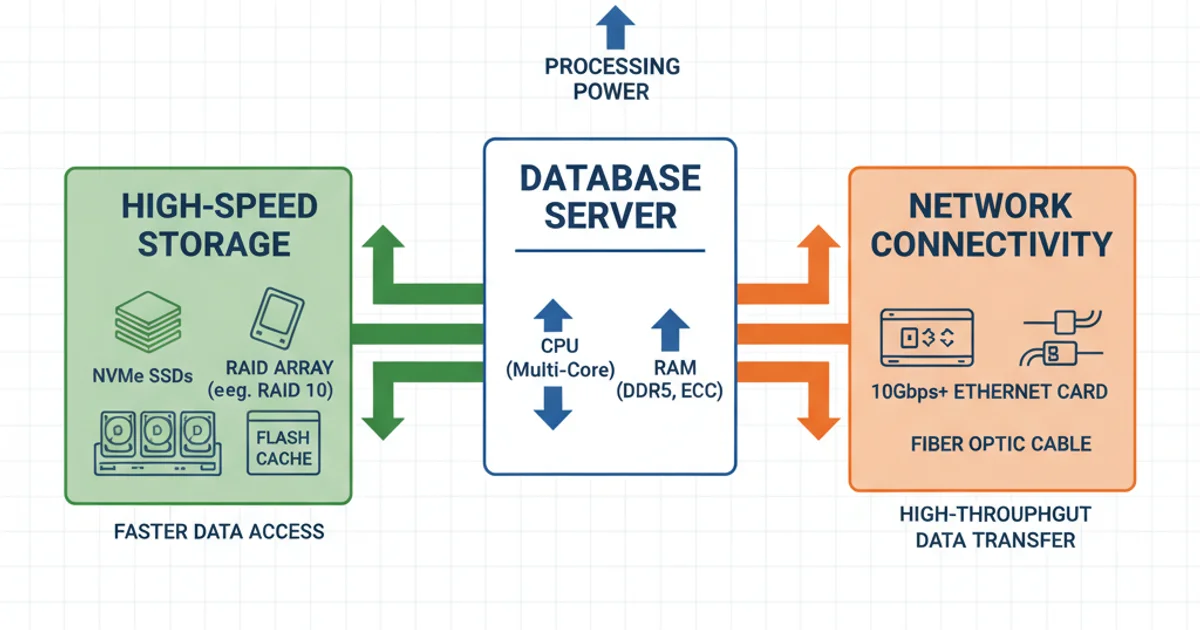How to increase the performance of a Database?
Boosting Database Performance: A Comprehensive Guide

Unlock the full potential of your database with proven strategies for optimization, indexing, query tuning, and hardware considerations. Learn how to identify bottlenecks and implement effective solutions.
Database performance is critical for the responsiveness and scalability of any application. A slow database can lead to frustrated users, missed business opportunities, and increased operational costs. This article delves into various techniques and best practices to significantly improve your database's speed and efficiency, focusing on SQL Server 2005 but with principles applicable to most relational database systems.
Understanding Database Bottlenecks
Before optimizing, it's crucial to identify where the performance issues lie. Bottlenecks can occur at various layers, including CPU, memory, disk I/O, network, or within the database itself due to inefficient queries or poor schema design. Monitoring tools are essential for pinpointing these areas.
flowchart TD
A[Application Request] --> B{Database Server}
B --> C{CPU Bottleneck?}
B --> D{Memory Bottleneck?}
B --> E{Disk I/O Bottleneck?}
B --> F{Network Bottleneck?}
B --> G{Query/Schema Bottleneck?}
C --> H[Optimize CPU-intensive tasks]
D --> I[Increase RAM, Optimize Caching]
E --> J[Faster Storage, RAID, Indexing]
F --> K[Improve Network Latency/Bandwidth]
G --> L[Tune Queries, Redesign Schema, Add Indexes]
H & I & J & K & L --> M[Improved Performance]Common Database Bottlenecks and Optimization Areas
Indexing Strategies for Faster Data Retrieval
Indexes are fundamental to database performance, allowing the database engine to quickly locate data without scanning every row in a table. However, over-indexing or poorly chosen indexes can also degrade performance, especially during write operations. It's a balance between read and write efficiency.
CREATE NONCLUSTERED INDEX IX_Customers_LastName_FirstName
ON Customers (LastName, FirstName);
CREATE CLUSTERED INDEX PK_Orders_OrderID
ON Orders (OrderID);
Example of creating non-clustered and clustered indexes in SQL Server.
WHERE clauses, JOIN conditions, ORDER BY clauses, and GROUP BY clauses. Use the Database Engine Tuning Advisor in SQL Server for recommendations.Optimizing SQL Queries and Stored Procedures
Inefficient SQL queries are a primary cause of slow database performance. Reviewing and optimizing your queries, stored procedures, and functions can yield significant improvements. This often involves understanding execution plans, reducing unnecessary data retrieval, and using appropriate join types.
-- Inefficient query
SELECT * FROM Orders WHERE OrderDate < '2005-01-01';
-- More efficient query (if only specific columns are needed)
SELECT OrderID, CustomerID, OrderDate FROM Orders WHERE OrderDate < '2005-01-01';
-- Using EXISTS instead of IN for better performance with subqueries
SELECT c.CustomerID, c.CompanyName
FROM Customers c
WHERE EXISTS (
SELECT 1
FROM Orders o
WHERE o.CustomerID = c.CustomerID
);
Examples of query optimization techniques.
SELECT * in production code. Always specify the columns you need. This reduces network traffic and memory usage, especially with wide tables.Hardware and Configuration Tuning
While software optimization is crucial, the underlying hardware and database configuration play a vital role. Ensuring adequate CPU, memory, and fast disk I/O (e.g., SSDs, RAID configurations) can prevent physical bottlenecks. Database configuration settings, such as memory allocation, tempdb settings, and transaction log management, also need careful tuning.

Key hardware components influencing database performance.
1. Monitor Performance Baselines
Regularly collect performance metrics (CPU, memory, disk I/O, query execution times) to establish a baseline. This helps in identifying deviations and measuring the impact of optimizations.
2. Analyze Execution Plans
Use your database's tools (e.g., SQL Server Management Studio's 'Display Estimated Execution Plan' or 'Include Actual Execution Plan') to understand how queries are processed and identify expensive operations.
3. Implement Indexing Strategically
Based on query analysis, create or modify indexes. Test the impact of new indexes on both read and write performance in a non-production environment.
4. Refactor Inefficient Queries
Rewrite queries that perform poorly. This might involve breaking down complex queries, using appropriate join types, or optimizing subqueries.
5. Tune Database Configuration
Adjust database server settings, such as memory allocation, parallelism settings, and I/O configurations, to match your workload and hardware capabilities.
6. Regular Maintenance
Perform routine maintenance tasks like index rebuilding/reorganizing, statistics updates, and database integrity checks to keep the database running smoothly.